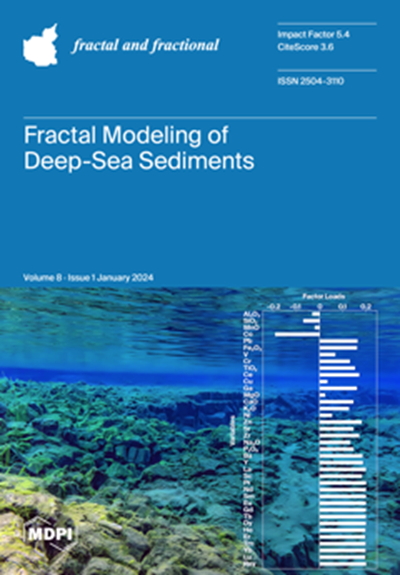基于分形理论的高层建筑室外颗粒物分布及分形特征
IF 3.6
2区 数学
Q1 MATHEMATICS, INTERDISCIPLINARY APPLICATIONS
引用次数: 1
摘要
了解不同高度颗粒物的分布特征,对有效控制颗粒物污染具有重要意义。基于分形理论,对西安某高层建筑室外颗粒物的分形维数及其与不同粒径颗粒物浓度的关系进行了探讨和分析。结果表明:西安市大气以细颗粒物为主,0 ~ 1.0µm的颗粒物平均占总颗粒物的99.885%;大气中不同高度颗粒的分形维数在5.014 ~ 5.764之间,平均分形维数为5.456。夏季17层室外颗粒物分形维数最大,为5.764。夏季分形维数较高,比冬季平均高0.158。分形维数越大,细颗粒所占比例越高。此外,分形维数可以很好地表征颗粒对有毒有害气体的吸附。它为了解不同高度大气颗粒物的分布和有效控制大气颗粒物提供了参数支持和应用价值。本文章由计算机程序翻译,如有差异,请以英文原文为准。
Distribution and Fractal Characteristics of Outdoor Particles in High-Rise Buildings Based on Fractal Theory
It is of great significance to understand the particle distribution characteristics at different heights to effectively control particle pollution. Based on fractal theory, the fractal dimension of outdoor particles in a high-rise building in Xi’an and its relationship with the concentration of particles with different particle sizes are discussed and analyzed in this paper. The results indicate that the atmosphere in Xi’an is mainly composed of fine particles and that the average proportion of particles ranging from 0 to 1.0 µm is approximately 99.885% of the total particulates. The fractal dimension of particles in the atmosphere at different heights ranges from 5.014 to 5.764, with an average fractal dimension of 5.456. In summer, the fractal dimension of the outdoor particles on the 17th floor was the largest, at 5.764. The fractal dimension in summer is relatively high, being 0.158 higher than that in winter on average. The larger the fractal dimension, the higher the proportion of fine particles. In addition, the fractal dimension can characterize the adsorption of toxic and harmful gases by particles well. It provides parameter support for understanding particle distribution and the effective control of atmospheric particles at different heights and application values.
求助全文
通过发布文献求助,成功后即可免费获取论文全文。
去求助
来源期刊

Fractal and Fractional
MATHEMATICS, INTERDISCIPLINARY APPLICATIONS-
CiteScore
4.60
自引率
18.50%
发文量
632
审稿时长
11 weeks
期刊介绍:
Fractal and Fractional is an international, scientific, peer-reviewed, open access journal that focuses on the study of fractals and fractional calculus, as well as their applications across various fields of science and engineering. It is published monthly online by MDPI and offers a cutting-edge platform for research papers, reviews, and short notes in this specialized area. The journal, identified by ISSN 2504-3110, encourages scientists to submit their experimental and theoretical findings in great detail, with no limits on the length of manuscripts to ensure reproducibility. A key objective is to facilitate the publication of detailed research, including experimental procedures and calculations. "Fractal and Fractional" also stands out for its unique offerings: it warmly welcomes manuscripts related to research proposals and innovative ideas, and allows for the deposition of electronic files containing detailed calculations and experimental protocols as supplementary material.
 求助内容:
求助内容: 应助结果提醒方式:
应助结果提醒方式:


